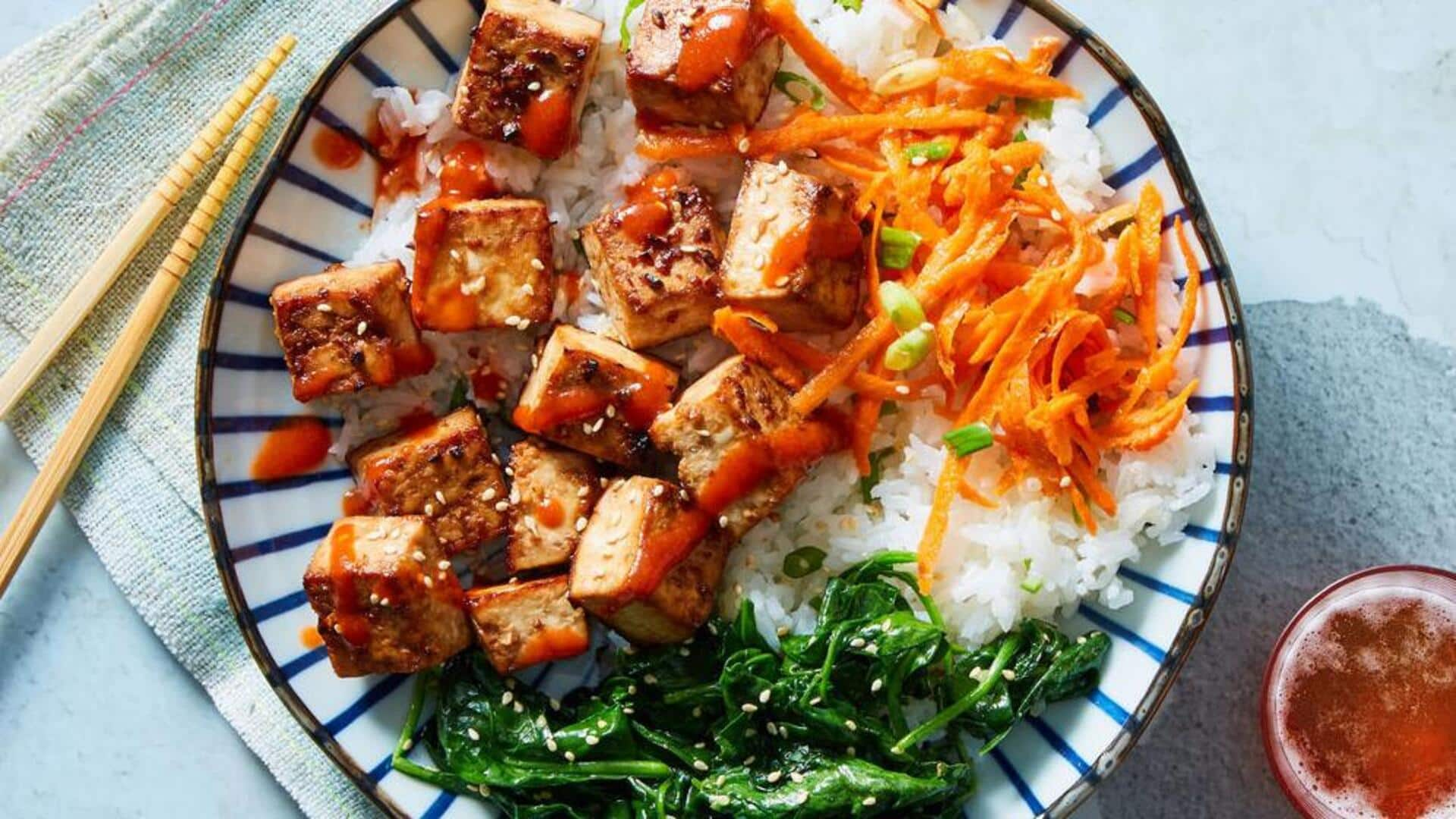
Guests coming over? Serve this Korean tofu bibimbap
What's the story
Bibimbap, a traditional Korean dish, shines with vibrant colors and diverse flavors. It usually combines rice, various vegetables, chili pepper paste, and often beef or egg. Our vegetarian and eggless version introduces tofu as the protein source. This approach not only delivers a delightful taste experience but also respects Korea's rich culinary tradition. Ready to start cooking? Let's embrace this culinary journey together.
Ingredients list
Gather the following ingredients
For this vegetarian tofu bibimbap, you will need one cup short-grain rice, two cups water, 200 grams firm tofu, one small carrot julienned, half a cucumber julienned, one cup spinach blanched, two tablespoons soy sauce, one tablespoon sesame oil, two cloves garlic minced, salt to taste, gochujang (Korean chili paste) to preference, and sesame seeds for garnish.
Step 1
Preparing the rice
Start by rinsing the short-grain rice under cold water until clear. Combine the rinsed rice with two cups of water in a saucepan. Bring to a boil over high heat, then lower the heat to simmer. Cover and let it simmer for about 18 minutes or until water is absorbed. Remove from heat and let it stand covered for 10 minutes.
Step 2
Cooking tofu & vegetables
While rice cooks, press tofu between paper towels to remove moisture. Cut into bite-sized pieces. Heat sesame oil in a pan over medium heat, add minced garlic, and saute until fragrant. Add tofu, cook until golden on each side, then season with soy sauce. Saute julienned carrots and cucumbers in the same pan after removing tofu, lightly to retain their crunch.
Step 3
Assembling bibimbap
To assemble your bibimbap bowls, begin with a base layer of cooked rice that is either at room temperature or slightly warm. Then, top this with sections of blanched spinach, alongside sauteed carrots and cucumbers. Add the golden brown tofu pieces, arranging them aesthetically around each bowl's edge. The goal is to create an appealing mix of colors and textures that delights the senses.
Step 4
Final touches
The final step adds significant flavor with gochujang (Korean chili paste). Each bowl should be served with gochujang either on top or on the side, catering to individual taste preferences. This allows each person to adjust their desired level of spiciness. Before serving immediately, garnish with sesame seeds for that perfect sizzle effect, making this dish exceptionally special and visually appealing.